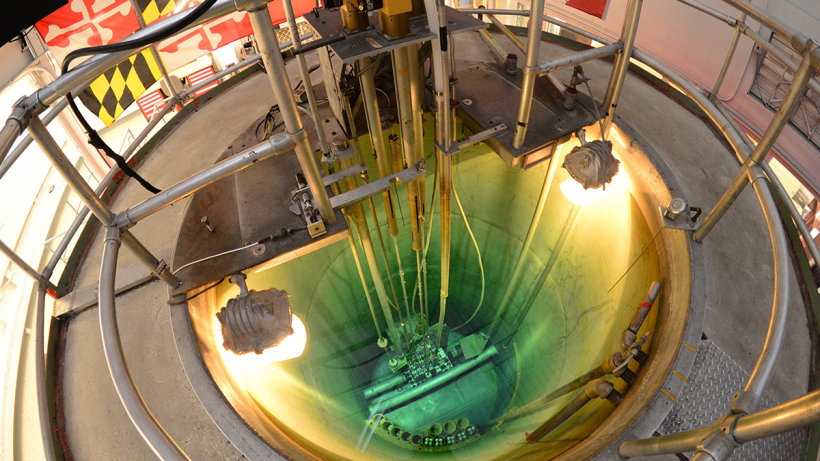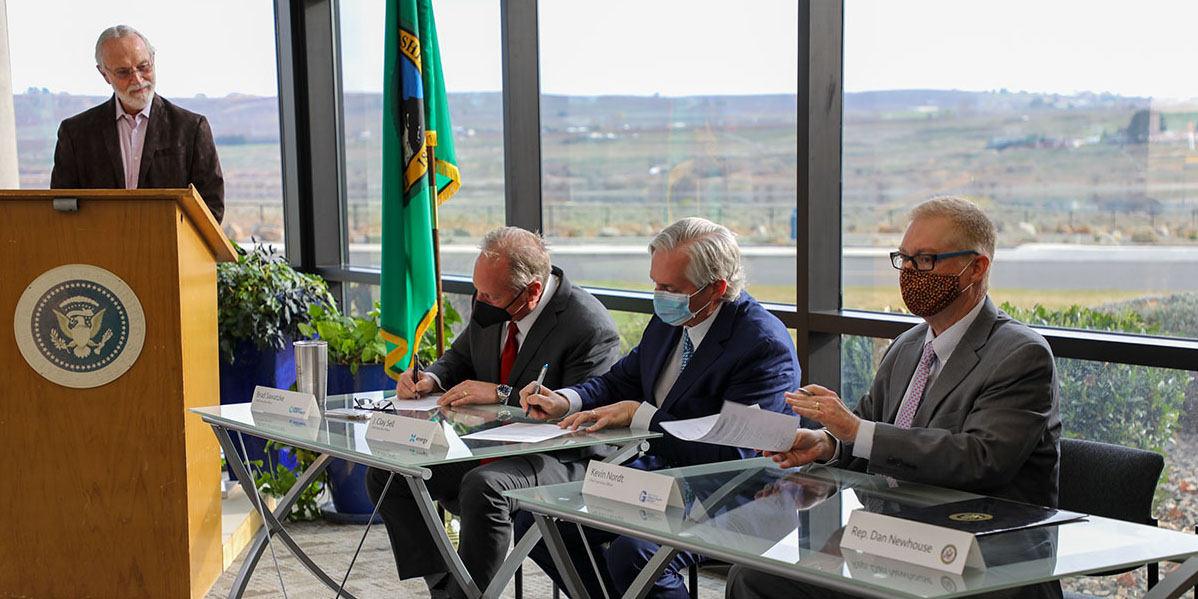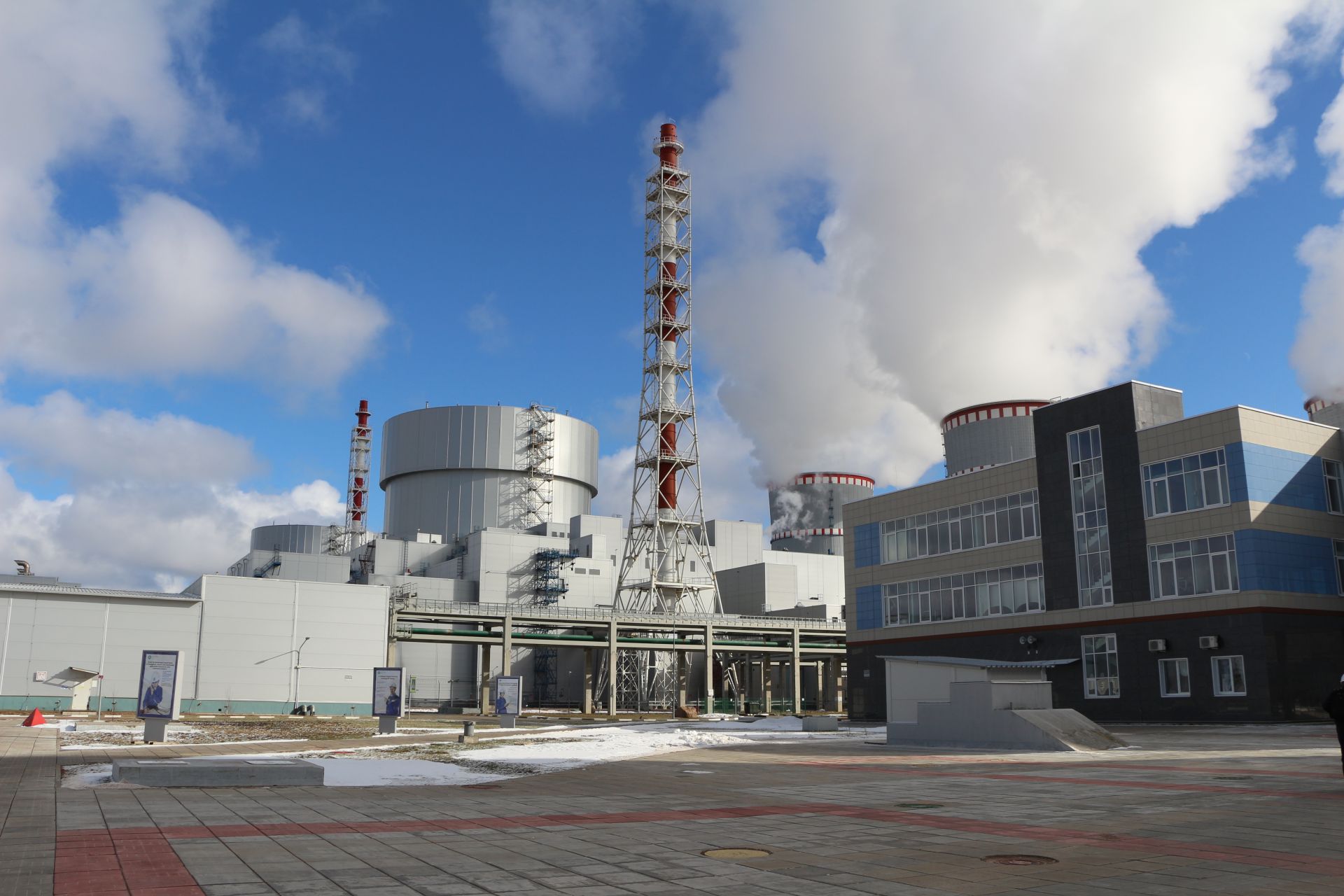Point Beach Units 1 and 2. Photo: NRC
An atomic safety and licensing board has been established to address a hearing request filed on behalf of an antinuclear group regarding the subsequent license renewal (SLR) application for NextEra Energy’s Point Beach reactors, located near Two Rivers, Wis. The Nuclear Regulatory Commission published notice of the panel’s formation in the April 2 Federal Register.
The Maryland University Training Reactor, one of 12 TRIGA reactors currently operating at universities in the United States. Photo: University of Maryland
TRIGA International, the only supplier of TRIGA reactor fuel in the world, recently completed a major renovation project at its fuel fabrication facility in Romans, France. The Department of Energy, which provided both technical and financial support for the project, said the upgrades ensure the continued operation of 36 TRIGA reactors around the world, including 18 in the United States.
Barakah-1 (right) is now providing reliable and sustainable electricity around the clock. Photo: ENEC
Unit 1 at the United Arab Emirates’ Barakah nuclear power plant has entered commercial operation and is now providing “constant, reliable, and sustainable electricity around the clock,” the Emirates Nuclear Energy Corporation (ENEC) announced this morning. ENEC added that, as a result of the event, the company now leads the largest decarbonization effort of any industry in the UAE.
The outside of the DIII-D tokamak, where testing that supports the development of the Compact Advanced Tokamak has been performed. Photo: General Atomics
Scientists at the DIII-D National Fusion Facility have published research on a compact fusion reactor design they say could be used to develop a pilot-scale fusion power plant. According to General Atomics (GA), which operates DIII-D as a national user facility for the Department of Energy’s Office of Science, the Compact Advanced Tokamak (CAT) concept uses a self-sustaining configuration that can hold energy more efficiently than in typical pulsed configurations, allowing the plant to be built at a reduced scale and cost.
Miners depart Niger’s Akouta uranium mine for the last time after production ended for good. Photo: Cominak
The Akouta mine in Niger stopped production on March 31 after 43 years of service and 75,000 metric tons of uranium extracted. Akouta, the largest underground uranium mine in the world, was operated by Cominak, a subsidiary of Orano. The shutdown was decided by Cominak’s board of directors on October 23, 2019, in response to the depletion of the mine’s deposit.
U.S. Rep. Dan Newhouse (R., Wash.) observes as (from left) Energy Northwest CEO Brad Sawatzke, X-energy CEO Clay Sell, and Grant PUD CEO Kevin Nordt sign the TRi Energy Partnership MOU on April 1 at the Port of Benton in Richland, Wash. Photo: Energy Northwest
Building the nation’s first advanced reactor is the goal of a partnership formed between X-energy, Energy Northwest, and the Grant County (Washington) Public Utility District (PUD).
The TRi Energy Partnership will support the development and demonstration of X-energy’s Xe-100 high-temperature gas reactor, which was selected by the Department of Energy for a cost-shared commercial demonstration by 2027 through the DOE’s Advanced Reactor Demonstration Program (ARDP). The new partnership was announced on April 1, when Clay Sell, X-energy’s chief executive officer; Brad Sawatzke, Energy Northwest’s CEO; and Kevin Nordt, the Grant County PUD’s CEO, met in Richland, Wash., to sign a memorandum of understanding.
Exelon's Byron Nuclear Generating Station.
A group of Illinois lawmakers joined Joe Duffy, executive director of the labor coalition Climate Jobs Illinois (CJI), at a virtual news conference on March 29 to unveil a union-focused, clean energy legislative proposal that includes help for the state’s struggling nuclear power plants.
Sen Joe Manchin gives his opening statement at the March 25 hearing.
The Senate Energy and Natural Resources Committee yesterday held a hearing to examine the latest developments in the U.S. nuclear energy sector, with a focus on ways to maintain and expand the use of nuclear in the United States and abroad.
Testifying before the committee were Jeffrey Lyash, president and chief executive officer of the Tennessee Valley Authority (TVA); Chris Levesque, president and CEO of TerraPower, Scott Melbye, president of Uranium Producers of America (UPA); Amy Roma, founding member of the Atlantic Council’s Nuclear Energy and National Security Coalition and a partner with the law firm Hogan Lovells; and J. Clay Sell, CEO of X-energy.








 The North Carolina State University (NCSU) Libraries Department and the Department of Nuclear Engineering are collaborating to build
The North Carolina State University (NCSU) Libraries Department and the Department of Nuclear Engineering are collaborating to build 
 Within the European Union, recognizing nuclear energy as green, sustainable, and worthy of investment depends on nuclear being added to the EU taxonomy of “sustainable investments that have been found to ‘do no significant harm’ to human health and to the environment.” The EU will issue a final taxonomy this year, and a decision to include nuclear power—which was excluded from a draft released in late 2020—could raise prospects for public and private nuclear investments both inside and outside the EU.
Within the European Union, recognizing nuclear energy as green, sustainable, and worthy of investment depends on nuclear being added to the EU taxonomy of “sustainable investments that have been found to ‘do no significant harm’ to human health and to the environment.” The EU will issue a final taxonomy this year, and a decision to include nuclear power—which was excluded from a draft released in late 2020—could raise prospects for public and private nuclear investments both inside and outside the EU.
 The Gateway for Accelerated Innovation in Nuclear (GAIN) announced that three nuclear technology companies—Radiant, Oklo, and Lightbridge—will receive GAIN nuclear energy vouchers to accelerate the innovation and application of advanced nuclear technologies.
The Gateway for Accelerated Innovation in Nuclear (GAIN) announced that three nuclear technology companies—Radiant, Oklo, and Lightbridge—will receive GAIN nuclear energy vouchers to accelerate the innovation and application of advanced nuclear technologies. 



